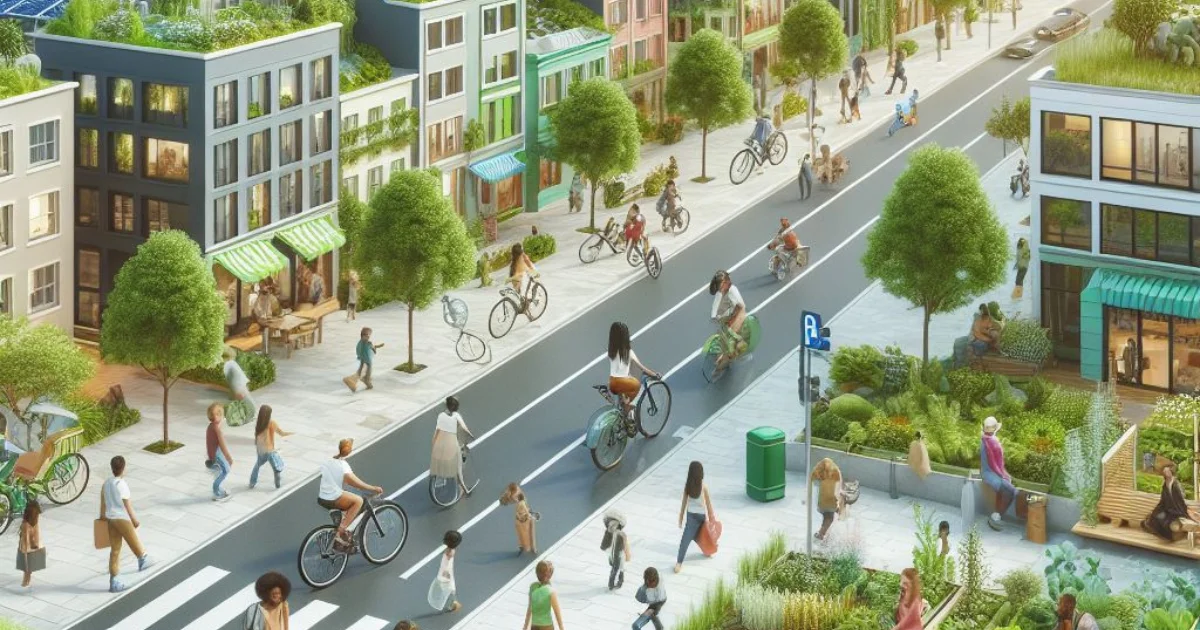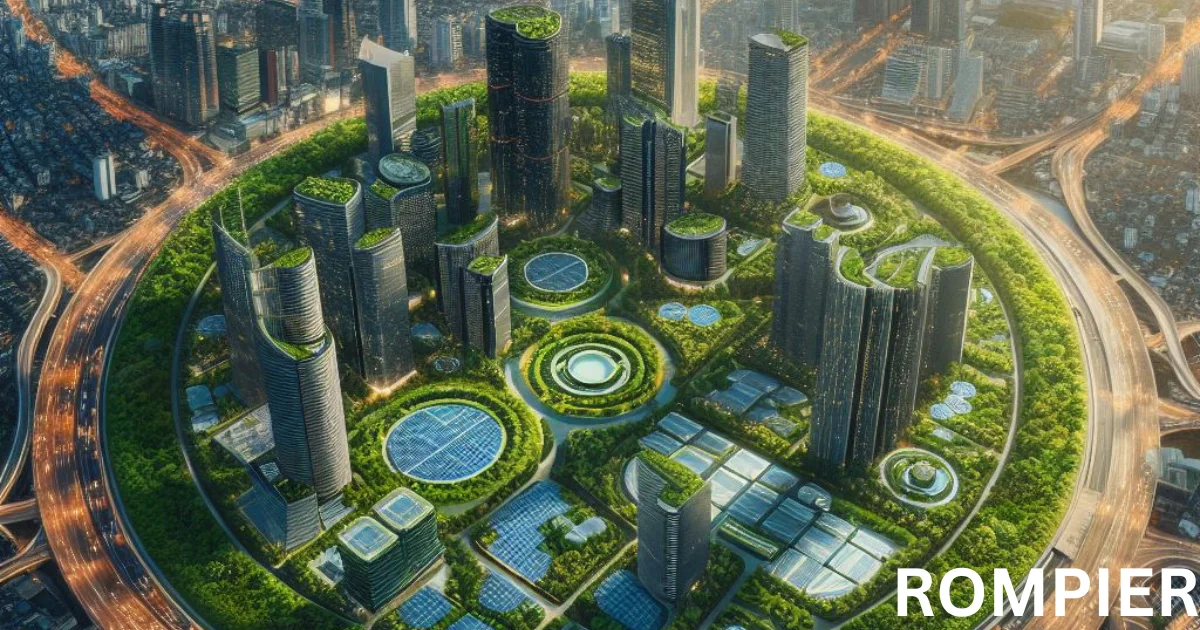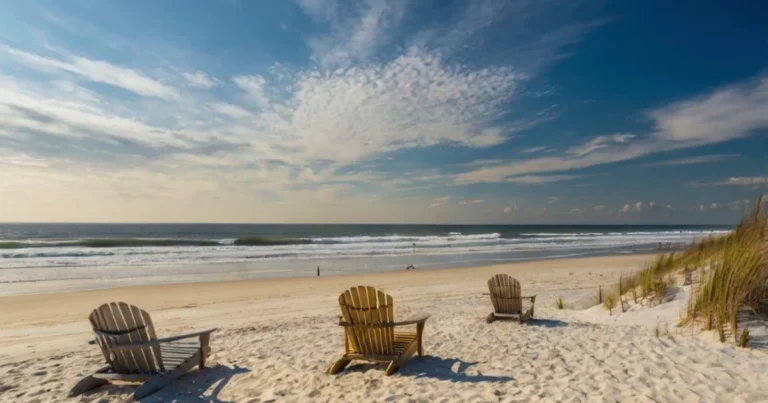The Beginner’s Guide to Sustainable Living in Urban Environments
In the bustling life of city dwellers, sustainable living might seem like a distant dream. However, adopting green practices in urban settings is possible and necessary for our planet’s future. This comprehensive beginner’s guide will explore how you can incorporate sustainability into your urban lifestyle. From simple steps to innovative solutions, learn how to make a positive environmental impact right where you live.

Urban Sustainability: A Key to Greener Futures
Urban environments are uniquely positioned to lead the charge in sustainability. With high population densities and innovative infrastructures, cities offer fertile ground for green practices that can significantly impact our ecological footprint.

Your Step-by-Step Journey to Green Living
1. Understanding Urban Sustainability
Before we make changes, it’s crucial to understand what urban sustainability entails. It’s about creating environmentally friendly, economically viable, and socially inclusive communities.
2. Green Transportation Choices
Opting for public transport, cycling, or walking cuts down on emissions and reduces your carbon footprint. Explore the benefits of these green transport modes and how they contribute to cleaner air.
3. Sustainable Food Consumption
Sustainable eating is not just about what you eat but how and where it’s sourced. Learn about urban gardening, community-supported agriculture (CSA), and the importance of choosing local and seasonal foods.
4. Energy Efficiency at Home
Discover how making your urban home more energy-efficient can decrease your energy bills and benefit the environment. From LED lighting to energy-saving appliances, small changes can make a big difference.
5. Waste Reduction and Recycling
Uncover tips for reducing waste in your daily life, including recycling programs, composting, and minimizing plastic use. Find out how these practices help conserve resources and reduce landfill waste.
6. Water Conservation Techniques
Water is a precious resource, even in the city. Explore practical ways to save water at home, such as fixing leaks, installing low-flow fixtures, and capturing rainwater for plants.
7. Elevating Green Spaces
Green spaces are vital for urban sustainability. They improve air quality, provide habitats for wildlife, and offer respite from the concrete jungle. Learn how to support and create green spaces in your community.
8. Sustainable Fashion Choices
The fashion industry significantly impacts the environment. Find out how choosing sustainable brands, thrifting, and clothes swapping can reduce waste and promote ethical consumption.
9. Supporting Green Businesses
By supporting businesses that prioritize sustainability, you’re investing in a greener economy. Learn how to identify and support eco-friendly businesses in your urban area.
10. Community Involvement
Sustainability thrives on community effort. Discover how joining local environmental initiatives or starting your own can amplify the impact of your sustainable practices.
11. DIY Green Projects
Get creative with DIY projects that not only add a personal touch to your space but also promote sustainability. From upcycling furniture to making your own cleaning products, the possibilities are endless.
12. Green Practices in the Workplace
Sustainability doesn’t stop at home. Learn ways to implement green practices in your workplace, from reducing paper use to encouraging remote work.
13. Investing in Renewable Energy
For those ready to take a bigger step, investing in renewable energy sources like solar or wind power can dramatically decrease your carbon footprint. Explore the options and benefits of making the switch.
14. The Role of Technology in Urban Sustainability
Technology plays a crucial role in advancing urban sustainability. Discover the latest innovations in green tech that are making cities smarter and more sustainable.
15. Integrating Sustainable Decor into Your Home
Lastly, learn how to incorporate sustainability into your home decor. This section includes tips on selecting environmentally friendly materials and showcasing the unexpected role of items like the Buddha concrete statue in promoting tranquility and mindfulness in your sustainable living space.
The Ripple Effect of Your Green Actions
Every sustainable practice you adopt has the potential to inspire others and create a ripple effect of eco-conscious behaviors. Start small, stay committed, and watch as your efforts contribute to a larger movement toward urban sustainability.
FAQS
Q: Can urban sustainability really make a difference?
A: Absolutely. When urban environments adopt sustainable practices, the cumulative effect can lead to significant improvements in air and water quality, reduction in greenhouse gas emissions, and a healthier community overall.
Q: How can I start an urban garden if I have limited space?
A: Vertical gardens, window boxes, and community gardens are excellent options for urban dwellers. These methods allow you to grow herbs, vegetables, and flowers even in the smallest of spaces.
Q: Is sustainable living more expensive?
A: While some sustainable options may have a higher initial cost, they often lead to savings in the long run through lower utility bills, reduced consumption, and less waste.
Q: How do I find sustainable products and services in my city?
A: Research online, ask for recommendations in local community groups, and look for certifications that indicate sustainable practices. Many cities also have directories for green businesses.
Q: Can I participate in urban sustainability efforts if I rent my home?
A: Yes, renters can participate by adopting sustainable living practices such as conserving water, reducing energy use, recycling, and supporting local and sustainable businesses. Engage with your landlord or building management about implementing larger-scale changes in your building.






